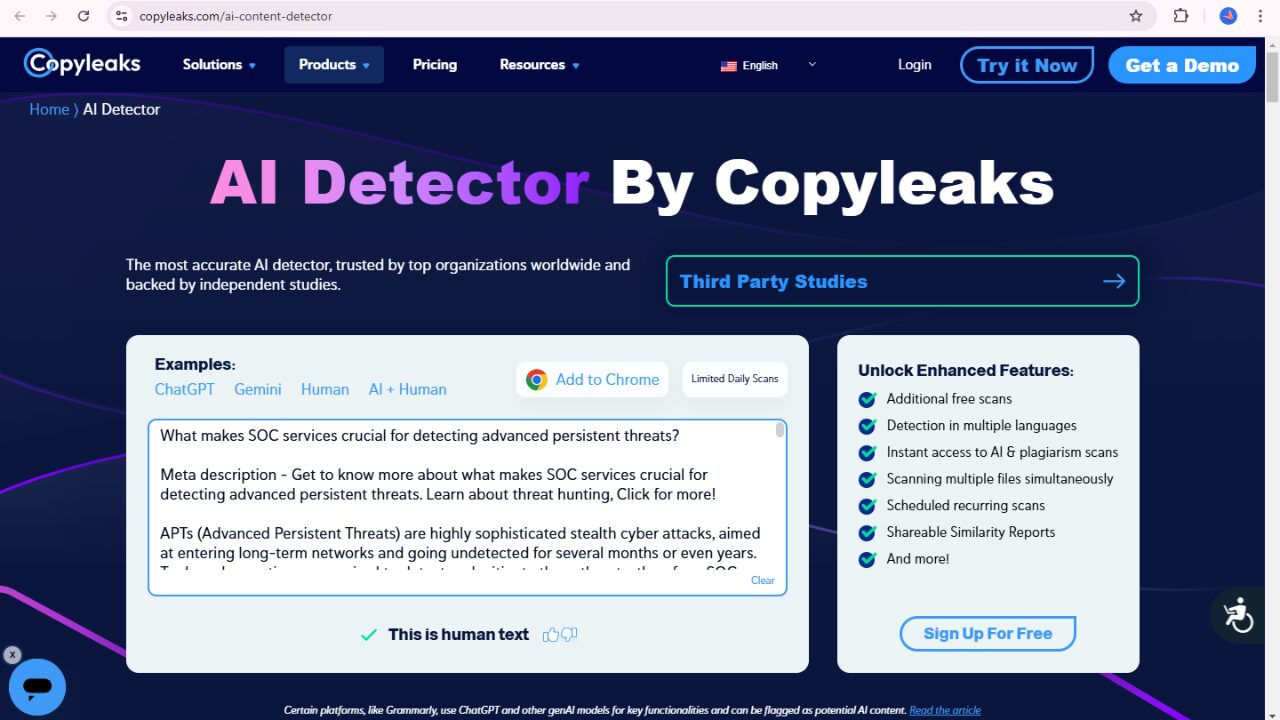What Makes Soc Services Crucial For Detecting Advanced Persistent Threats?

APTs (Advanced Persistent Threats) are highly sophisticated stealth cyber attacks aimed at entering long-term networks and going undetected for several months or even years. Tools and expertise are required to detect and mitigate these threats; therefore, SOC (Security Operations Center) is needed services. Here are reasons why social service matters in detecting and responding to APTs.
The Role of SOC services
1. 24/7 Monitoring for Continuous Detection
APTs are persistent and subtle, often staying in networks for months or years. The aim is to steal confidential information or take control of systems without alarming anyone. It enables SOC service to monitor networks and systems continuously, 24 hours daily. Early detection of potential APTs is thus made possible. Continuous surveillance enables detecting uncommon behavior, unauthorized access to specific resource types, and APT detection before massive damage occurs.
2. Specialized Analysis and Threat Hunting
APTs are very sophisticated attacks that require special knowledge and investigation skills because they use multiple fronts to enter networks. The SOC has security experts with specialized training in advanced threat identification and tracking. They actively look for hidden risks by threat hunting and using other skills and tools to detect possible APT activity. Their skills and training ensure they can detect even the most stealthy attacks.
3. Real-Time Detection and Response
It is tough to detect APTs using traditional security measures, and when they are detected, time is critical. SOC services provide real-time detection of incidents and responses, which helps to contain and swiftly neutralize threats. This enables immediate action to contain and neutralize threats. With tools such as IDS and endpoint security software, which help in the real-time detection of malicious activities, SOC teams can act fast enough to keep the attack impacts low.
4. Behavioral Analytics for Early Warning
They have questions about how to avoid arousing suspicion through standard network traffic and have little alarm when using traditional security alerting schemes. This is where the SOC can bring in a behavioral analytics service that looks for deviations from established activity patterns as suggested anomalies. This allows the SOC to discover APT incidents earlier, even when they act as if their activities are expected, and prevent them from proliferating.
5. All-encompassing intelligence on Threats
Threat intelligence is critical for identifying APTs since these attacks rely on known tactics, techniques, and procedures (TTPs). SOCs feed on the black feeds of threat intelligence to help them keep up to date on the latest modes of attacks and indicators of compromise (IOCs). This intelligence would enable SOCs to recognize familiar behavior of APT, even when the attack technique is new, for much faster detection and response.
6. Collaboration regarding Incident Reporting
It is often said that dealing with APTs is not just an issue of security but one that affects and concerns IT and compliance departments. In fact, during an attack, SOC services offer smooth movement and detailed reporting on actions taken during such incidents. Such reports form a critical part of the investigations that show how a security incident began and the measures taken to mitigate it, thereby improving defenses for similar events in the future.
READ MORE
Conclusion
Security Operations Center services offer advanced on-the-ground detection and mitigation measures for Advanced Persistent Threats (APTs). Instead of annoying yet expensive long-term monitoring and analysis from a practitioner, SOC has a simple behavioral clue analysis strategy. Thus, all these procedures would assist an organization in developing a strong security posture against APT threats.
